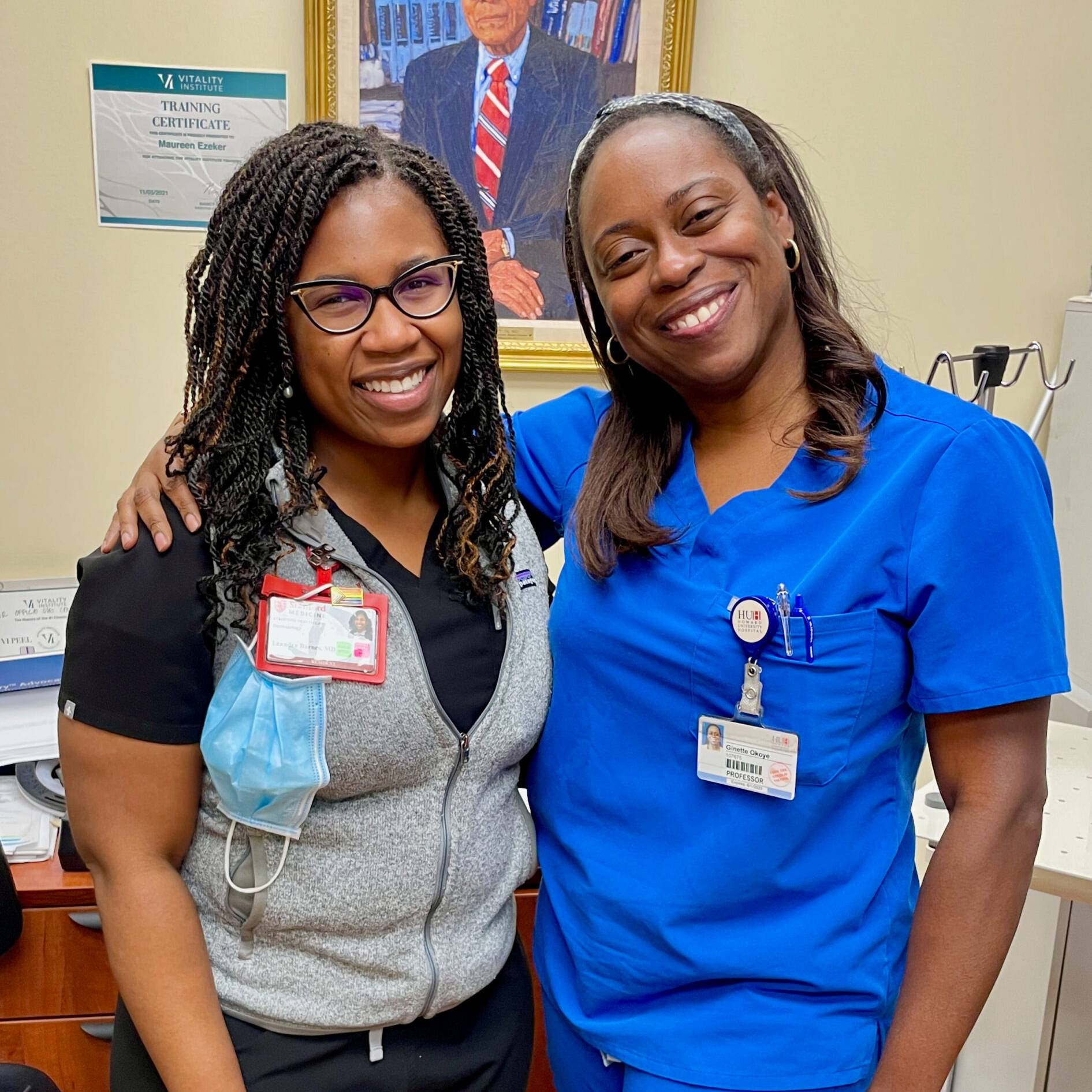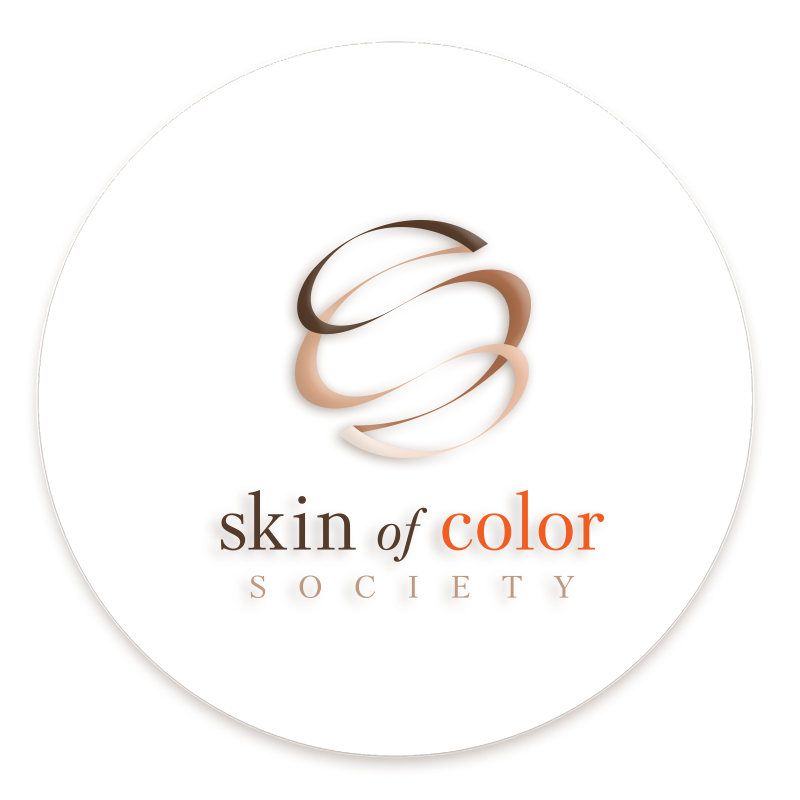
Mentee: Leandra Barnes, MD
Mentor: Ginette A. Okoye, MD
Howard University Hospital
I am excited to share a summary of my experience as a recipient of a 2022 SOCS Observership Grant. I was fortunate to learn from Dr. Ginette Okoye and Dr. Angel Byrd, as well as numerous colleagues at Howard University, in September 2022. This experience has further fueled my passion and commitment to caring for vulnerable and underserved communities via clinical and research interests in medical and procedural hidradenitis suppurativa (HS) and skin of color, teaching and mentoring, and the promotion of diversity, equity, inclusion, and justice in healthcare.
In the dermatology clinics at Howard University Hospital, I cared for patients of color and cultivated skills in the medical and procedural management of HS with Dr. Okoye. I worked closely with the Howard residents and medical students to collect histories, perform comfortable physical exams, develop therapy plans, and perform deroofing surgeries over the month. I also learned the nuances of diagnosing HS and its many mimickers, such as cutaneous Crohn’s disease. I was able to use these skills to facilitate comprehensive
medical and procedural dermatologic care for our HS patients at Stanford Dermatology through my novel hybrid continuity clinic. This past month, we performed our first deroofing surgery on one of my African American female patients. She healed beautifully and was grateful to have her persistent tunnel removed. I plan to bring these experiences to future programs in skin of color and HS to provide comprehensive patient-centered care for those traditionally underserved by dermatology.
In addition to clinical care, I continued research projects in skin of color and HS with Dr. Angel Byrd at Howard University. We previously found that immune complexes can activate macrophages to release proinflammatory cytokines in HS Hurley stage II and III, which yielded a publication in the Journal of Investigative Dermatology. This month, in collaboration with Dr. Carmelo Carmona-Rivera at the National Institute of Arthritis and Musculoskeletal and Skin Diseases (NIAMS), we explored the role of Notch-gamma
secretase in HS skin lesions and tunnels. We also worked on a review to assess the inclusion of samples from African American participants in HS basic science studies. We have preliminarily found that a minority of studies report participant demographics, and only a fraction of those include participants of African descent. I plan to use the skills and relationships that I developed this month to further our understanding of the underlying mechanisms of HS and conditions that affect patients of color.
In summary, my SOCS Observership experiences with Dr. Ginette Okoye and Dr. Angel Byrd at Howard University were invaluable for my learning and growth as a future academic dermatologist with a focus on clinical care and research in HS and skin of color dermatology, teaching and mentoring, and the promotion of diversity, equity, inclusion, and justice in healthcare.







